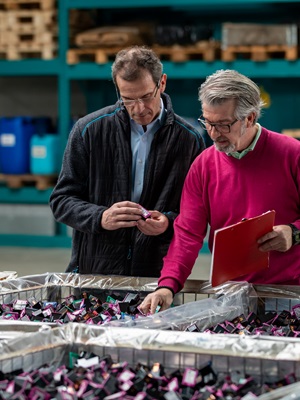To what extent can EVs provide for a clean energy future? Clearly, for all their benefits, our pernicious overreliance on cars nullifies them. We should be uncomfortable seeing the ubiquity of private vehicles dominating our roads, and question the general nonchalant attitude towards owning and driving a car.
Effectiveness of current policies
Let us examine present efforts in reducing car use, and how effective they have been. I find that government policies abound in promoting an EV-switch, and to a smaller extent, disincentivising car use. There is also a gap in ground-level conversations about attitudes towards cars (short-termist mindsets, pollution, necessity).
Singapore’s policies to deter car ownership date back to 1972, when the country rolled out the Additional Registration Fee (ARF) system, a tax imposed on the registration of a vehicle. Indeed, higher pricing fixes economic inefficiencies created by mispricing, and may even represent the social costs of pollution from manufacturing. Since 1990, Singapore has also implemented the Vehicle Quota System (VQS) to regulate vehicle numbers, and central to that system is the Certificate of Entitlement (COE) which accords drivers the right to vehicle ownership for ten years. In the most recent bidding exercise, COE premiums for cars were between $71,556 and $99,999 — far higher than the cost of the car itself. Sky-high COE prices also reflect how car demand remained robust even during the pandemic.
To reduce the frequency of driving, in 1998 Singapore introduced the Electronic Road Pricing (ERP) system, a form of congestion pricing. Made up of a network of 93 gantries situated on arterial routes, expressways and the central business district (CBD), the ERP levies road charges on passing vehicles with costs ranging from S$0.50 to S$5.00. Increased ERP rates have been credited for easing congestion as well.
To some extent, both the VQS and the ERP have effectively deterred car ownership and lowered traffic densities at peak hours. Authorities have set car growth rates to 0% through the VQS. Traffic volume into the CBD declined 10 to 15% during ERP operating hours. But these policies also have perverse effects of favouring the rich, and cast aside those who need the car but cannot afford it.
Of course, economic disincentives can also be progressively crafted. I recognise the progressive bent in the luxury car tax, recently introduced in Budget 2022. Under the new ARF tier, cars with an open market value (OMV) exceeding S$80,000 must pay 220% of the OMV for the portion exceeding S$80,000. This helps to increase government revenues without levying cost burdens on the general population.
Another progressive policy introduced is the Revised Off-Peak Car Scheme (ROPS), which offers existing car owners lowered registration fees and road taxes, in exchange for restricted driving timings, especially during peak hours. By lowering the barrier-to-entry, more people can own cars without contributing to traffic congestion, supporting the lower-income with more affordable prices.
Aside, from the environmental perspective, the frequent turnover of cars that these policies encourage are not necessarily better. While cleaner, more energy efficient technologies run on the road, the vast energy accrued to build the car may outweigh energy saved in switching to EVs (it depends on the mileage; generally, the lower the mileage, the more meaningful it is to keep the old car).
Excessive road pricing and the reduced crowds created can also hurt merchants’ businesses. Altogether, a deterrence approach primarily driven by dollars and cents is prone to creating inequality. For a more comprehensive approach to tackle car addiction, we need non-economic solutions as well. Now, let us look at car-lite campaigns and private-led initiatives.
The Urban Redevelopment Authority (URA) organises monthly Car-Free Sundays, a community initiative occurring on the last Sunday of every month. Instead of traffic, roads are used for a series of outdoor activities ranging from yoga to pebble-painting for kids. The event has generally received positive feedback from the public, as seen in the survey below (Figure 2).
Figure 2. Responses to the survey question, ‘How would you rate Car-Free Sundays thus far?’
Source: Goh, 2017. [link]
While the event attracted more car owners than non-drivers, possibly signalling an increasing interest in the car-free concept, the event also ironically generated more personal car trips to the event. This not only negates the intended benefits of avoided driving but also highlights a lack of true buy-in into the ideology.
There are also plenty of private-led initiatives, which aim to provide market solutions through inventing technologies, novel ridership concepts and improved supply chain connections. Car-sharing firms have reported spikes in usership recently, boosting their revenues. Last year, one firm had 30,000 active users, a steep hike from 7,000 a year ago. While on one hand, increasing interest in car-sharing is a reason to cheer; on the other hand this is a boost to profit-making business models that is fundamentally predicated upon users driving more, not less; it still asks for car fleets to expand, not shrink. Consumers remain motivated by cost, not environmental ideologies. A business strategy that is conflictual with the aspirations of the climate movement at its core, it is limited in its environmental effectiveness.
Other industry-led projects involve the production of low-carbon materials, or projects with zero material waste. For example, car manufacturer BMW Group announced that from 2026, low-carbon steel will be used in its cars. Undoubtedly, sustainable material sourcing is essential for realising a circular economy. Nonetheless, while sustainable material procurement is important, even its endless demand inevitably means other trade-offs, as less materials are available for other necessities. To attain the car-lite vision in the truest sense, market-based solutions are not enough.
While the above policies have controlled congestion and promoted sustainability to some extent, they have only very weakly cultivated interest in broader climate action. Validating the cost-first mentality, for one, does nothing to create a society motivated by larger environmental and social concerns, and thus fails to invigorate the climate movement. Instead — like any environmental policy should — the car-lite movement should be grounded in inspiring climate consciousness and rejecting consumerism; these then galvanize more individual and collective climate action. Thus, I argue that we urgently need a cultural change in our attitudes towards cars. We need a new societal narrative on driving habits which embodies degrowth, the spirit of the climate movement.
Shifting societal narratives : a question of necessity
How do we change something as abstract as a societal narrative? To challenge the necessity of cars in our city-state, let us first examine the alleged benefits of safety, convenience and overall improved well-being, by studying similar situations overseas.
The belief that private transportation is safer than public transport is a common misconception worldwide. However, the truth cannot be further from this. Users of public transit are far less likely to suffer traffic casualties, compared to their counterparts taking private transport, as shown in the figure below.
Figure 3. Transport fatalities across different types of transport.
Source: Litman & Fitzroy, 2012. Based on FHWA and APTA data. [link]
“It takes just a modest increase in public transit use to result in a dramatic decrease in traffic fatalities,” said Paul Skoutelas, president and CEO of American Public Transportation Network (APTA), in a 2018 Bloomberg article.
Neither do cars provie substantial salubrious effects on well-being. Beijing researchers found that car ownership does not improve life satisfaction; on the contrary, infrequent car use is correlated with higher travel and life satisfaction as users avoided the mental exhaustion and stress that come with driving. Furthermore, contrary to how our culture equates travel time to wasted time, time spent on work commute in fact contributes to overall happiness. Below, too, is a graph from a study based in Xi’an depicting how commute mode relates to happiness levels. Satisfaction offered by cars was outcompeted by shuttle buses, bicycles, walking and the subway.
Even environmentally-conscious driving has been linked to negative effects on mood. Hence, it is fallacious to think that driving offers us better mental well-being.
Perhaps the purpose of cars go beyond its utilitarian functions, too. In a comparative study of Singapore and London, it found that in Singapore, cars served more than mere utilitarian purposes — it was socially desirable as a symbol of ‘success’. In contrast, Londoners viewed cars as a necessity due to the lack of available alternatives. Indeed, the attention given to conspicuous consumption is not unique to Singapore. A study in India found that while income and household demographics drive car ownership, household perceptions of social status was a key variable as well. But why do we feel good showing off an object tainted with environmental injustice? We need to call it for what it is and change our mindsets towards driving.
After all, the nation’s public transportation infrastructure is increasingly extensive (in fact, one of the world’s highest already), and inclusive of families, the elderly, the disabled and those with ‘invisible medical conditions’. Pavements are safe to walk alone at night. In a land-constrained island where land reclamation is at its utmost limit, constant driving should be less socially acceptable, with the pollution budget reserved for unique circumstances.
Posted 14/09/2023

















5 months ago
Really insightful